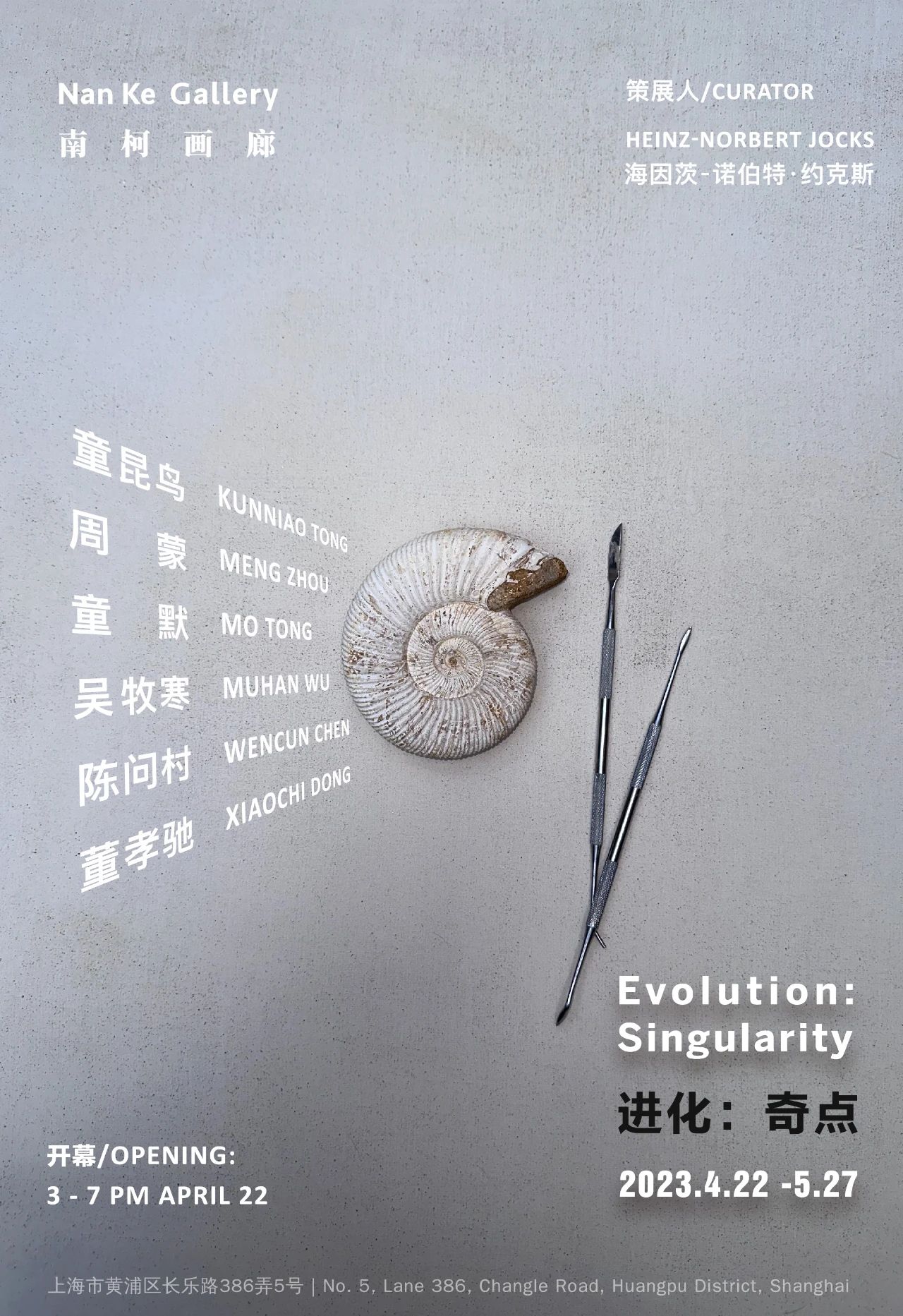Nanke Gallery is pleased to announce the gallery's inaugural exhibition Evolution: Singularity, which will be presented in Shanghai on 22 April 2023. The exhibition is curated by renowned German writer and curator Heinz-Norbert Jocks (b.1955), who was the curator of Liu Xiaodong's first European retrospective in Düsseldorf in 2018. Evolution: Singularity will feature representative works by six young Chinese artists, including the artists Kunniao Tong (b.1990), Meng Zhou (b.1992), Muhan Wu (1997), Wencun Chen (b.1991), Xiaochi Dong (b.1993), and Mo Tong (b.1999). These artists work in the mediums of painting, lithography and kinetic installation, many of them using ready-made objects as their source material, through which they explore the three dimensions of time, life and the question of existence.
The title Evolution: The Singularity reveals that art evolves in an evolutionary way and at the same time represents the uniqueness of the artists. New things do not come out of nowhere, but build on old ones, and artistic interpretations of the real world can be expressed as a kind of cheerful or melancholic imagination. The concept of a 'singularity' in mathematics is a 'point that cannot be defined', while in physics it refers to a singular form that existed before the Big Bang. Perhaps the everyday objects we take for granted today, even the toilet, are made up of atoms created billions of years ago, i.e. any form of existence originated from that singularity. Thus, the differences between people and things are not as vast as we might think.
An avid yard sale enthusiast, Kunniao Tong works with materials that are commonly seen as junk, scraps that have lost their original use and are full of signs of age. He finds inspiration in ready-made objects, which he integrates into kinetic installations. Not only do they ignite the viewer's vision and imagination, but they also elevate the meaning of the works attached to them to poetic heights (e.g. the 3D astronaut model, a painting, a model plane and a toilet in Crown on the Toilet ). His ability to reconcile the contemporary with the traditional is shown by a painting in which he quotes Chinese traditional landscape painting and embeds in it an image of his toilet sculpture, thus enriching the figuration. In this way, he transcends time.
Mo Tong's paintings also look at the past, and are about the time before he was born specifically. We can see him as an archaeologist of the past, collecting images and using them to try to restore the past, to unearth fragments of it. Those historical images tell us that the past is the source of the present, on the other hand, they also show the prosperity and beauty of the past.
The mediums and vehicles used by Meng Zhou include sculpture, painting and installation. It is no coincidence that he is also breaking down the materials he collects and reorganising them to create new systems and aesthetic languages. Eyephaessa is a sculpture that appears to be a floor lamp in human form, yet the light bulb has a connotation that goes far beyond the material itself, symbolising light and suggesting an ancient Greek perception that the eye is the source of light. In a way, Meng Zhou's paintings are also a link to this ancient human consciousness.
Muhan Wu spent her childhood in an industrial area, and she translates her experiences of growing up in this environment into kinetic works where reason and sensibility are delicately balanced. She has a strong interest of mechanical engineering and repetitive movements that we do not consciously perceive normally as they are meaningless to us. Wu also has a keen sense of machine humming and other noises, and her installations are the result of experimental experiments based on observations of the world around her.
Wencun Chen is a painter and installation artist who uses snippets of text from magazines, newspapers, television and films to reflect on the discomfort of the use of language and its ineffectiveness'. Mostly Women, along with Handle with Care, is part of a series of works created by Chen in 2020. The artist has carefully selected words and phrases that were originally given a fixed meaning and then became instantly indeterminate. This leads us to question the use and effect of language with a critical attitude.
Responding to materialism, Xiaochi Dong's paintings are rooted in traditional landscape painting but follow a path of personalisation that respects the present. It can be interpreted as a poetic attempt to dream of a life free from the domination of material things and to imagine a different world governed by other laws. The three works in this exhibition are all inspired by his favourite London garden, Kew Garden, and a fallen leaf in the garden. The fallen leaves are the starting point for his journey on canvas, and the artist has deliberately discarded colour in favour of shades of grey and white, thus expanding the depth of time and the breadth of space.

